H Bio Final - Semester 1
5.0(1)
5.0(1)
Card Sorting
1/158
Earn XP
Description and Tags
Study Analytics
Name | Mastery | Learn | Test | Matching | Spaced |
|---|
No study sessions yet.
159 Terms
1
New cards
Steps of Scientific Method
PIMP ERIC:
1)define the Problem (question)
2)gather additions Information
3)Make a hypothesis
4)Plan the experiment (list of materials needed, procedure/method)
5)do the Experiment
6)Record the data(data table)
7)Interpret graphs
8)Conclusion (is hypothesis correct? cite data, sources of error, ways to improve)
1)define the Problem (question)
2)gather additions Information
3)Make a hypothesis
4)Plan the experiment (list of materials needed, procedure/method)
5)do the Experiment
6)Record the data(data table)
7)Interpret graphs
8)Conclusion (is hypothesis correct? cite data, sources of error, ways to improve)
2
New cards
what is a hypothesis?
educated guess
has to be if... then... statement
has to be testable
specific
has to be if... then... statement
has to be testable
specific
3
New cards
independent variable
variable that the scientist controls, stays the same throughout experiment, on x-axis
4
New cards
dependent variable
data that the scientist is collecting (because of the independent variable), goes on the y-axis
5
New cards
data tables
use a ruler, title, column heading, units of measure
6
New cards
graphs
use at least 75% of graph, IND variable on the x-axis, DEP variable on the y-axis, units (in parenthesis), title = y vs. x, needs a key if more than one line is on the graph
7
New cards
characteristics of life
1)made up of cells (aka basic units)
2)based on a universal genetic code, DNA
3)obtain and use energy
4)grow and develop
5)reproduce
6)respond to their environment
7)maintain stable internal environment
8)evolve/change over time
2)based on a universal genetic code, DNA
3)obtain and use energy
4)grow and develop
5)reproduce
6)respond to their environment
7)maintain stable internal environment
8)evolve/change over time
8
New cards
taxonomy
science of classifying organisms
9
New cards
steps of taxonomy
(biggest to smallest)
Domain
Kingdom
Phyllum
Class
Order
Family
Genus
Species
how to remeber:
Does King Phillip Come Over For Great Soup?
Domain
Kingdom
Phyllum
Class
Order
Family
Genus
Species
how to remeber:
Does King Phillip Come Over For Great Soup?
10
New cards
prokaryotic cells
unicellular
flagella
simple, small
ex. bacteria
absent nucleus
one circular DNA strand
cell division by binary fission
flagella
simple, small
ex. bacteria
absent nucleus
one circular DNA strand
cell division by binary fission
11
New cards
eukaryotic
large, complex
have a membrane bound nucleus
multicellular and unicellular
ex. animals, humans, plants, fungi
sexual reproduction
cell division by mitosis (cytokinesis)
have a membrane bound nucleus
multicellular and unicellular
ex. animals, humans, plants, fungi
sexual reproduction
cell division by mitosis (cytokinesis)
12
New cards
both prokaryotic and eukaryotic
have DNA
contain a plasma (cell) membrane
contain cytoplasm
contain ribosomes
carry on all necessary functions of life
have vesicles
flagella in some
contain a plasma (cell) membrane
contain cytoplasm
contain ribosomes
carry on all necessary functions of life
have vesicles
flagella in some
13
New cards
cell parts and organelles
cell membrane (plasma membrane)
cytoskeleton
cytoplasm
organelles
nucleus
chromatin
nuclear envelope
nucleolus
centriole
rough endoplasmic reticulum (rough ER)
smooth ER
ribosome
golgi apparatus
mitochondria
lysosome
vacuole
chloroplast
cell wall
cytoskeleton
cytoplasm
organelles
nucleus
chromatin
nuclear envelope
nucleolus
centriole
rough endoplasmic reticulum (rough ER)
smooth ER
ribosome
golgi apparatus
mitochondria
lysosome
vacuole
chloroplast
cell wall
14
New cards
cell membrane
- semi permeable (allows some things in and keeps others out)
- "gate keeper" of the cell
- in plant, animal, and eukaryotic cells
- "gate keeper" of the cell
- in plant, animal, and eukaryotic cells
15
New cards
cytoskeleton
- provides support.shape/strength for cell
- made of microfilaments and microtubules
- microtubules = hollow tubes made of protein
- microfilaments = thin filaments of protein
- made of microfilaments and microtubules
- microtubules = hollow tubes made of protein
- microfilaments = thin filaments of protein
16
New cards
cytoplasm
- jellylike substance inside the cell
- where many cellular reactions take place
- surrounds organelles and keeps them in place
- where many cellular reactions take place
- surrounds organelles and keeps them in place
17
New cards
organelles
- "mini organs"
- membrane bound parts of cell
- membrane bound parts of cell
18
New cards
nucleus
- control center of the cell
- contains DNA
- contains DNA
19
New cards
chromatin
- DNA "tangles" in the nucleus
- coils into chromosomes during cell division
- long and thin DNA strands
- coils into chromosomes during cell division
- long and thin DNA strands
20
New cards
nuclear envelope
- membrane surrounding the nucleus
- contains holes (nuclear pores) that allows RNA to leave nucleus
- contains holes (nuclear pores) that allows RNA to leave nucleus
21
New cards
nucleolus
- makes ribosomes
- looks like a ball of yarn
- found inside the nucleus
- looks like a ball of yarn
- found inside the nucleus
22
New cards
centriole
- microtubules which may aid in cell division
- ONLY IN ANIMAL CELLS
- located near nucleus
- looks like a churro
- ONLY IN ANIMAL CELLS
- located near nucleus
- looks like a churro
23
New cards
Rough Endoplasmic Reticulim
- transports proteins and other substances throughout the cell
- has ribosomes on surface
- has ribosomes on surface
24
New cards
smooth ER
- makes lipids and carbohydrates
- no ribosomes
- no ribosomes
25
New cards
ribosome
- site of protein synthesis
- can be free floating or attached to the rough ER
- can be free floating or attached to the rough ER
26
New cards
golgi apparatus
- collects, modifies, packages, and ships substances made by the cell
- substances are packages in vesicles
- "UPS"
- substances are packages in vesicles
- "UPS"
27
New cards
mitochondria
- powerhouse of the cell
- site of cellular respiration (generates ATP for cell)
- has folded inner membrane (cristae, increases surface area for cellular respiration)
- have their own DNA
- site of cellular respiration (generates ATP for cell)
- has folded inner membrane (cristae, increases surface area for cellular respiration)
- have their own DNA
28
New cards
lysosome
- janitor
- contains digestive enzymes that destroy worn out cell parts and materials
- also digest carbs, proteins, lipids
- may play a roll in human development
- RARELY found in plant cells
- AKA suicide sac
- comes from golgi apparatus (golgi makes lysosome)
- contains digestive enzymes that destroy worn out cell parts and materials
- also digest carbs, proteins, lipids
- may play a roll in human development
- RARELY found in plant cells
- AKA suicide sac
- comes from golgi apparatus (golgi makes lysosome)
29
New cards
vacuole
- fluid filled sac that stores food, water, wastes, enzymes
- very LARGE in PLANTS (can take of 70-80% of cell)
- very LARGE in PLANTS (can take of 70-80% of cell)
30
New cards
chloroplast
- site of photosynthesis
- ONLY IN PLANT CELLS
- internal structure contains stacks of pancakes AKA grana which increase surface area for photosynthesis
- ONLY IN PLANT CELLS
- internal structure contains stacks of pancakes AKA grana which increase surface area for photosynthesis
31
New cards
cell wall
- rigid structure surrounding cell membrane that provides support
- made of cellulose
- PLANT CELLS (and some bacteria)
- gives plant cells square shape
- made of cellulose
- PLANT CELLS (and some bacteria)
- gives plant cells square shape
32
New cards
animal cells
- centrioles
- chromatim
- small vacuole (vacuoles are rare)
- many lysosomes
- chromatim
- small vacuole (vacuoles are rare)
- many lysosomes
33
New cards
plant cells
- cholorplast
- cell wall
- large vacuole
- cell wall
- large vacuole
34
New cards
cell membrane structure
- all cells have to maintain homeostasis
- cell/plasma membrane - phospholipid bilayer
Phospholipid:
- phosphate head (hyrophollic, polar)
- lipid tails (hydrophobic, nonpolar)
- cell/plasma membrane - phospholipid bilayer
Phospholipid:
- phosphate head (hyrophollic, polar)
- lipid tails (hydrophobic, nonpolar)
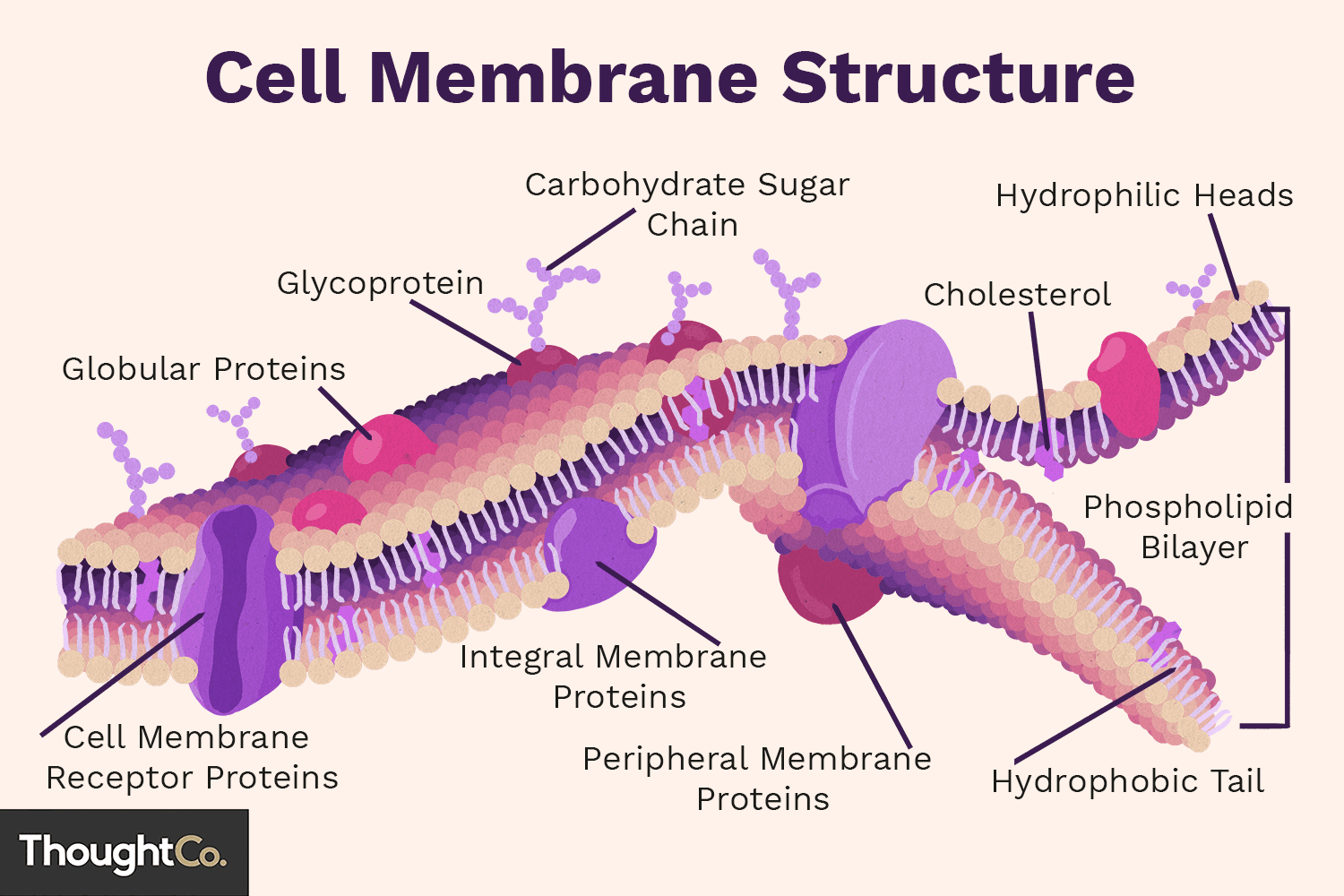
35
New cards
cholesterol
embeded in the phospholipid bilayer for stability and support
36
New cards
proteins
- embedded (integral)
- go all the way through the membrane
- important in moving big molecules across the cell membrane
- go all the way through the membrane
- important in moving big molecules across the cell membrane
37
New cards
channel
tunnel
38
New cards
surface (Peripheral)
- important in cell communication
- cell identification
- cell identification
39
New cards
aquaporins
- pores where water moves in and out
40
New cards
glycoprotein
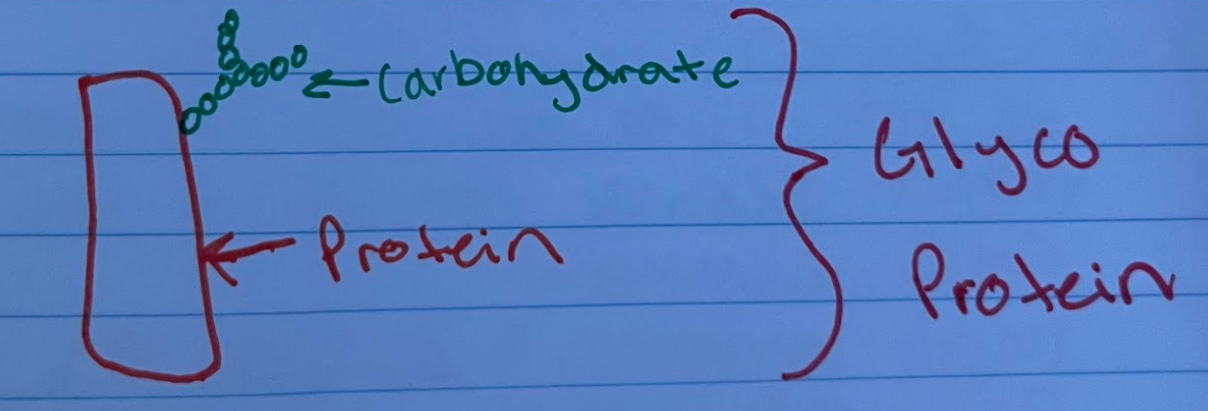
41
New cards
cell transport
1) passive transport
2) active transport
2) active transport
42
New cards
passive transport
does not need energy
diffusion (molecule more from high [ ] to low [ ])
diffusion (molecule more from high [ ] to low [ ])
43
New cards
active transport
needs energy
1)diffusion
2)facilitated diffusion
- high [ ] to low [ ]
3)osmosis
- movement of water from high [ ] to low [ ]
1)diffusion
2)facilitated diffusion
- high [ ] to low [ ]
3)osmosis
- movement of water from high [ ] to low [ ]
44
New cards
factors that affect rate of diffusion
- temperature
- pressure
- size
- steepness
- pressure
- size
- steepness
45
New cards
semi-permeable
lets some things in and keeps others out
46
New cards
osmotic solutions (osmosis)
a)isotonic
- same [ ] of water in and out of cell
- no net movement of water
- cell stays same size
b)hypotonic
- more water outside cell so the water moves in cell
- cell gets bigger and can burst
c)hypertonic
- more water in cell so water moves out
- cell shrinks
- same [ ] of water in and out of cell
- no net movement of water
- cell stays same size
b)hypotonic
- more water outside cell so the water moves in cell
- cell gets bigger and can burst
c)hypertonic
- more water in cell so water moves out
- cell shrinks
47
New cards
active transport types
1)exocytosis - exiting
2)endocytosis - entering
1)phagocytosis - cell eating
2) pinocytosis - cell drinking
2)endocytosis - entering
1)phagocytosis - cell eating
2) pinocytosis - cell drinking
48
New cards
virus
- genetic material encased in a capsid (protein coat)
- very small
- can be spherical, helical, or icosohedral
- obligate parasites
- very small
- can be spherical, helical, or icosohedral
- obligate parasites
49
New cards
bacteriophage
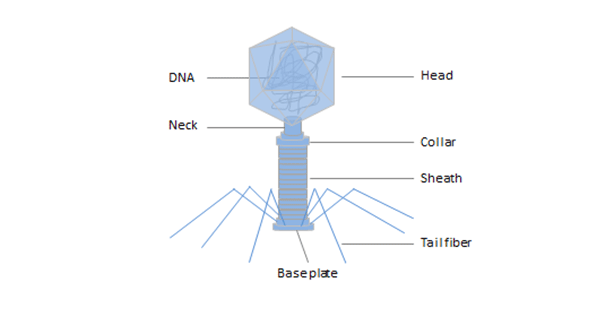
50
New cards
capsid
protein coat
51
New cards
envelope
extra layer of protection
52
New cards
spikes
proteins and carbohydrates on surface of capsid
53
New cards
DNA viruses
- more stable, less likely to mutate
- some have RNA proteins
- sometimes DNA incorporates into host cell DNA
- vaccines
- bigger
- proof reading abilities (Check for mutations)
- some have RNA proteins
- sometimes DNA incorporates into host cell DNA
- vaccines
- bigger
- proof reading abilities (Check for mutations)
54
New cards
RNA viruses
- not stable
- mutate more often
- very small
- some are retroviruses (can make DNA from RNA, reverse transcript)
- if vaccines, boosters needed
- mutate more often
- very small
- some are retroviruses (can make DNA from RNA, reverse transcript)
- if vaccines, boosters needed
55
New cards
virus replication
1)lytic
2)lysogenic
2)lysogenic
56
New cards
lytic cycle
- kills the host cell
- AERAR
- virulent (violent/aggresive)
- AERAR
- virulent (violent/aggresive)
57
New cards
AERAR
1)attachment
2)entry
3)replication
4)assembly
5)release
2)entry
3)replication
4)assembly
5)release
58
New cards
lysogenic cycle
- temperate (milder)
- replication of viral DNA without killing the host cell
- hides out
-AEIM
- stressor causes the virus to turn lytic
- replication of viral DNA without killing the host cell
- hides out
-AEIM
- stressor causes the virus to turn lytic
59
New cards
AEIM
1)attachment
2)entry
3)integration
4)cell multiplication
2)entry
3)integration
4)cell multiplication
60
New cards
prophage
provirus
61
New cards
host range
each type of virus can infect a limited range of host cells
broad = wide range of species it can infect
specific - narrow range
broad = wide range of species it can infect
specific - narrow range
62
New cards
virions
new/baby viruses
63
New cards
viriods
smallest know viral particles
64
New cards
prions
abnormal protein clumps
65
New cards
vaccine
preparation of a pathogen
inactivated or attenuated
inactivated = can NOT replicate in host
attenuated = genetically altered so it CANNOT cause disease
inactivated or attenuated
inactivated = can NOT replicate in host
attenuated = genetically altered so it CANNOT cause disease
66
New cards
pathogen
stimulates an immune response and provides protection
67
New cards
bacteria
- unicellular
- simple
- no nucleus
- prokaryotic
- singular circle strand of DNA
- has ribosomes
- strong rigid cell wall
- SOME have extra layer of protection (capsule)
- SOME have flagella (tail for movement)
- SOME have pili (hairs on surface of cell that help bacteria stick together)
- reproduce by binary fission
- simple
- no nucleus
- prokaryotic
- singular circle strand of DNA
- has ribosomes
- strong rigid cell wall
- SOME have extra layer of protection (capsule)
- SOME have flagella (tail for movement)
- SOME have pili (hairs on surface of cell that help bacteria stick together)
- reproduce by binary fission
68
New cards
conjugation
- bacteria kissing
- one bacteria passes drug resistance to another bacteria
- one bacteria passes drug resistance to another bacteria
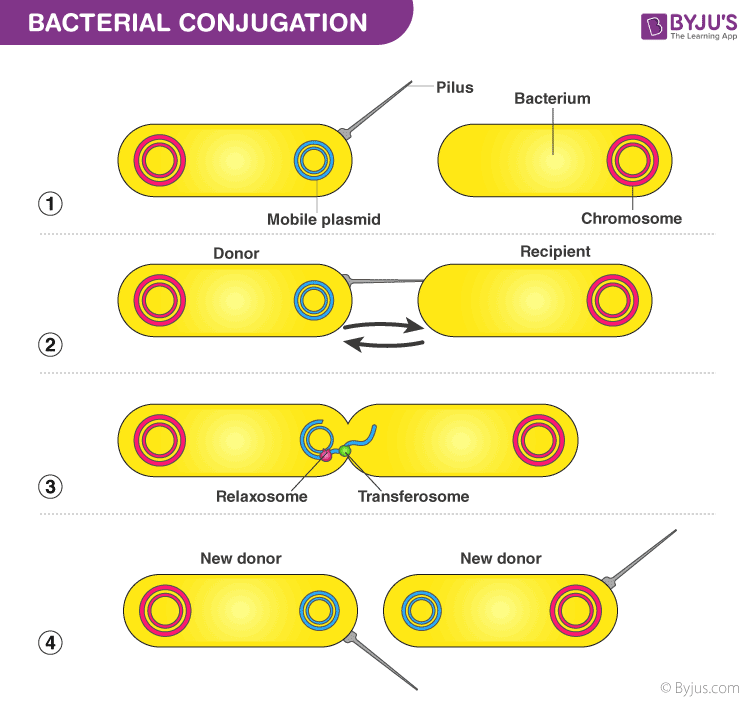
69
New cards
endospore
bacteria hybernates until conditions are favorable - can last over 100 years
70
New cards
morphology
shape:
- bacillus = rod
- coccus = round
- spirillum - spiral
arrangement:
- diplo = 2
- strepto - long chain
- staphlo - clusters
- bacillus = rod
- coccus = round
- spirillum - spiral
arrangement:
- diplo = 2
- strepto - long chain
- staphlo - clusters
71
New cards
antibiotics
prevent bacteria from replicating
72
New cards
photosynthesis
in plants, in chloroplast, makes glucose
73
New cards
leaf anatomy
primary site for photosynthesis
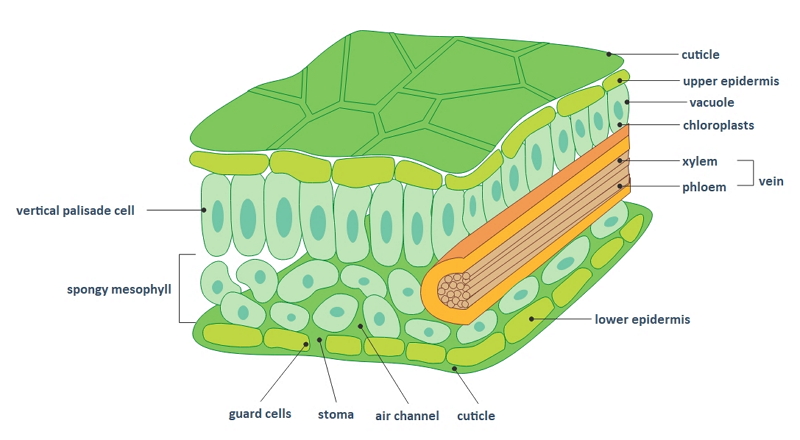
74
New cards
balanced photosynthesis equation
sun + 6CO2 + 6H20 ---(chlorophyll arrow)----> C6H12O6 + 6Oc
75
New cards
chlorophyll
pigment
not used up or changed
traps light energy
not used up or changed
traps light energy
76
New cards
parts of chloroplast
thylakoid membrane, stroma, grana
77
New cards
primary pigments
chlorophyll a: (mvp)
absorbs mostly red light
chlorophyll b:
absorbs mostly blue light
absorbs mostly red light
chlorophyll b:
absorbs mostly blue light
78
New cards
accessory pigment
xanthophyll - yellow
carotene - orange
beta carotene (anthocyanin) - red
carotene - orange
beta carotene (anthocyanin) - red
79
New cards
light reaction
in thylakoid membrane
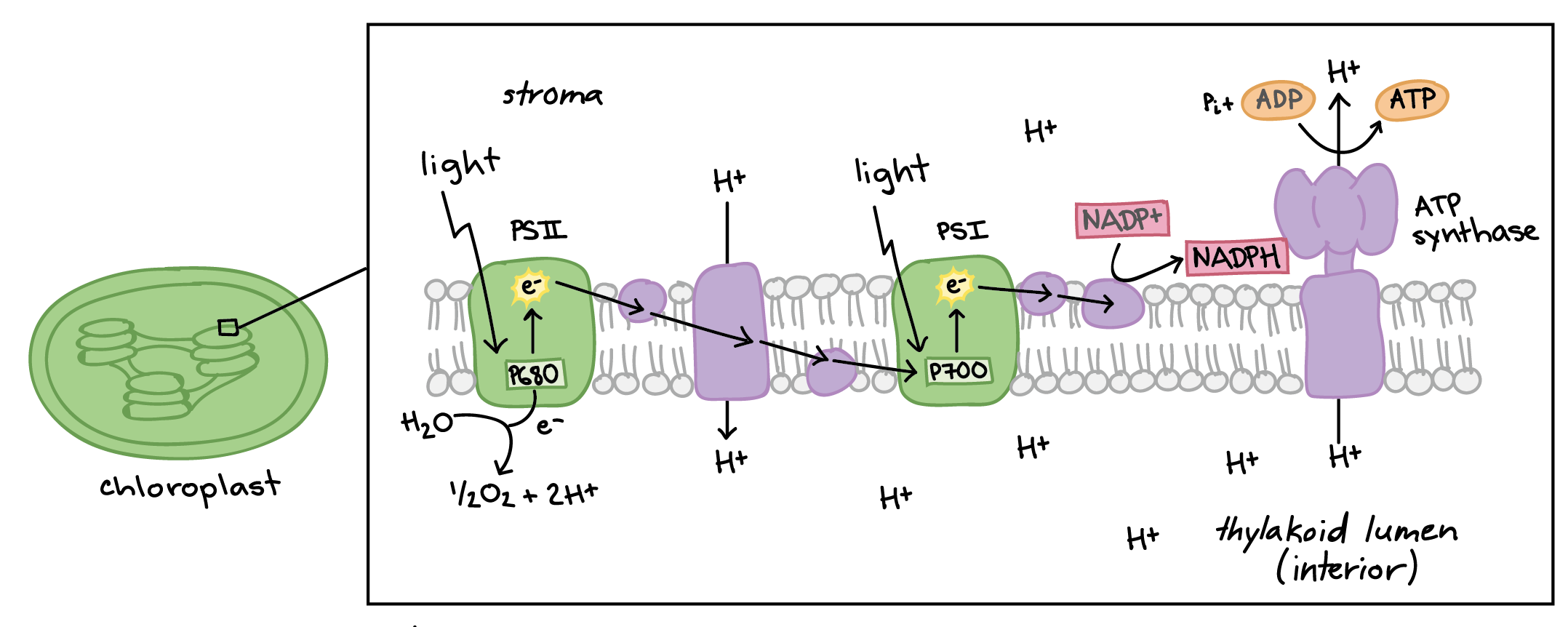
80
New cards
calvin cycle
in stroma
1)carbon fixation
2)reduction
3)regeneration
1)carbon fixation
2)reduction
3)regeneration
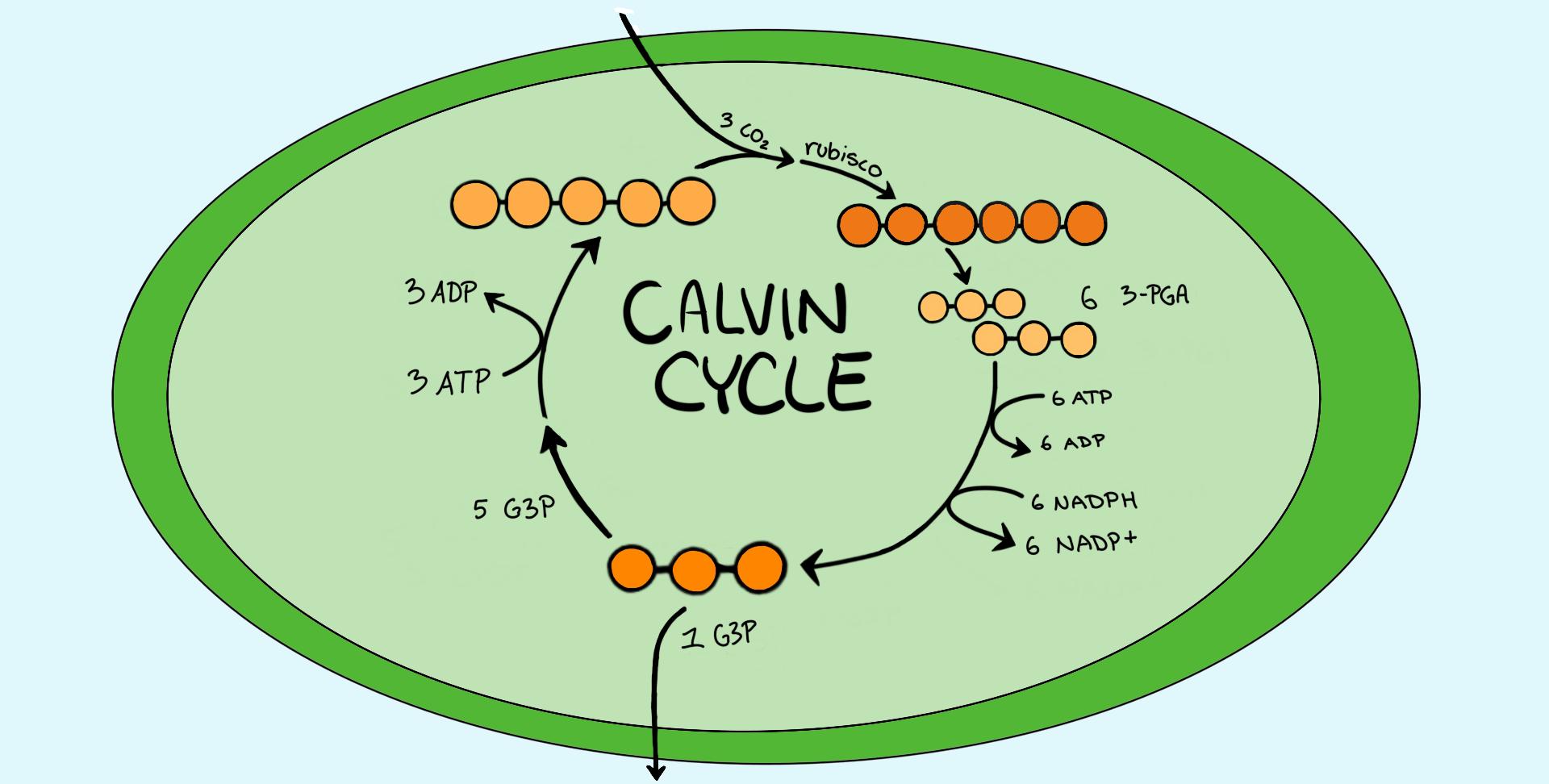
81
New cards
NADPH formula
2e- + H+ + NADP+ ---> NADPH
82
New cards
water splitting formula
2H2O ----> 4H+ + 4e- + O2
83
New cards
ATP
adenosine triphosphate
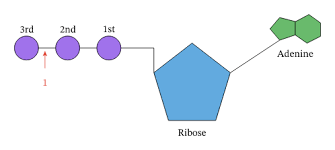
84
New cards
ADP
adenosine diphosphate
85
New cards
chemiosmosis
protein push
movement of H+ from inside thylakoid membrane to stroma
movement of H+ from inside thylakoid membrane to stroma
86
New cards
ATP synthase
integral protein channel for H+
87
New cards
OIL RIG
oxidation is losing e-
reduction is gaining e-
reduction is gaining e-
88
New cards
cellular respiration
anaerobic and aerobic
in all living things
in all living things
89
New cards
anaerobic
NO O2
- net yield of 2 ATP
- faster
1)glycolysis - 2 atp, glucose breaks in half
2a)lactic acid fermentation
2b)alcohol fermentation
- net yield of 2 ATP
- faster
1)glycolysis - 2 atp, glucose breaks in half
2a)lactic acid fermentation
2b)alcohol fermentation
90
New cards
aerobic
WITH O2
- many steps
- C6H12O6 + 6O2 -----> 6CO2 + 6H20 + 38 ATP
1)glycolysis - 2 atp, glucose breaks in half
2)2 pyruvic acid + coenzyme a = Acetyl CoA
3)krebs cycle - 2 atp, gives off e-, CO2 released, FADH2 + NADH are e- carriers
4)electron transport chain - 34 atp, gives off water, atp synthase
- many steps
- C6H12O6 + 6O2 -----> 6CO2 + 6H20 + 38 ATP
1)glycolysis - 2 atp, glucose breaks in half
2)2 pyruvic acid + coenzyme a = Acetyl CoA
3)krebs cycle - 2 atp, gives off e-, CO2 released, FADH2 + NADH are e- carriers
4)electron transport chain - 34 atp, gives off water, atp synthase
91
New cards
digestion
process of breaking down food into molecules the body can use
92
New cards
mechanical digestion
physically changing the size of the food
93
New cards
chemical digestion
a change in the chemical nature of the nutrients
94
New cards
gastrointestinal tract
Hollow organs that food passes through
95
New cards
teeth
mechanical digestion
96
New cards
molars
grinding in back of mouth
97
New cards
incisor
biting
98
New cards
canine
piercing
99
New cards
bicuspid
grinding
100
New cards
tongue
push bolus back in mouth